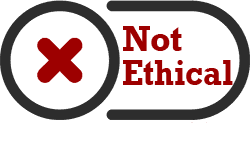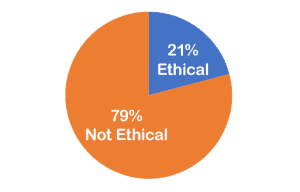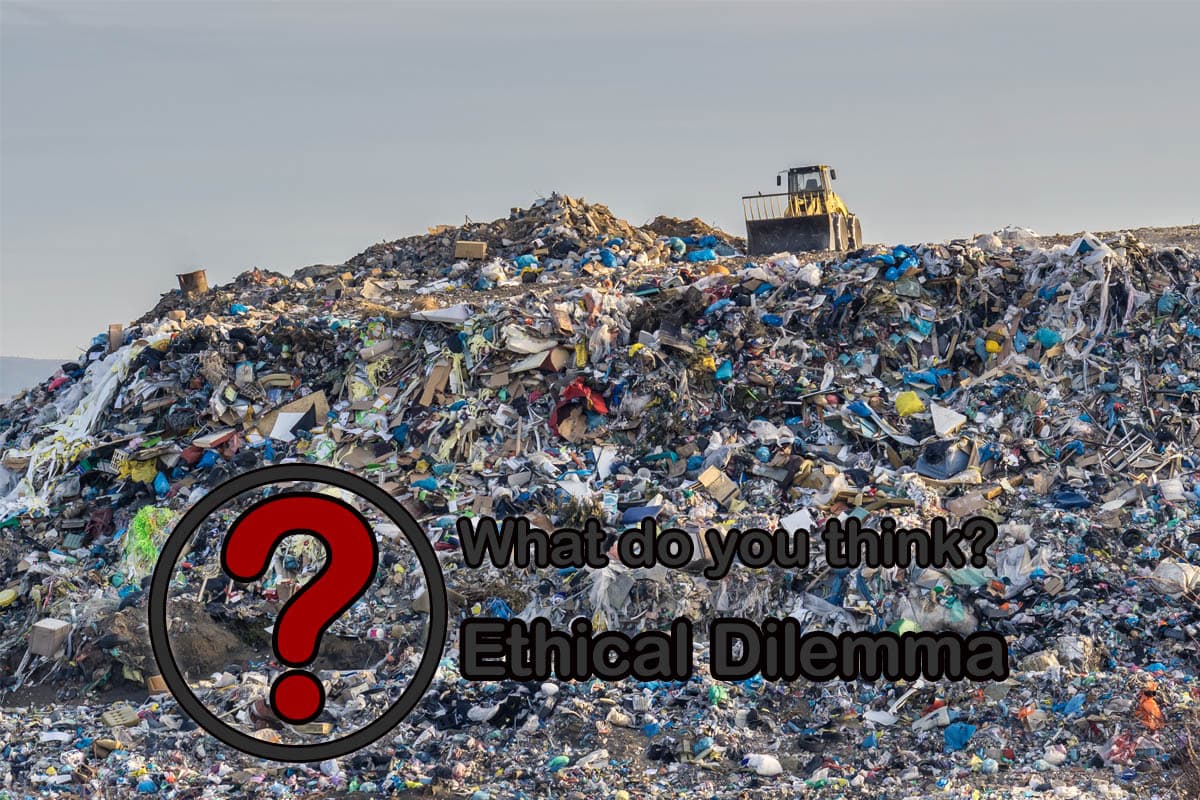This is the July 2022 edition of our monthly series of Ethics case studies titled What Do You Think? This series is comprised of case studies from NSPE archives, involving both real and hypothetical matters submitted by engineers, public officials and members of the public.
Your peers and the NSPE Board of Ethical Review have reviewed the facts of the case as shown below. And, here are the results.
Your opinion has been registered for the July 2022 edition of our monthly series of Ethics case studies titled What Do You Think?
Your vote is recorded as:

Want to know how your peers voted? We’ll send you an email with the poll results on July 26.
Your opinion has been registered for the July 2022 edition of our monthly series of Ethics case studies titled What Do You Think?
Your vote is recorded as:

Want to know how your peers voted? We’ll send you an email with the poll results on July 26.
A Review of the Facts
Engineer Andy, a principal in ABC Engineering, an environmental engineering firm, submits qualifications and a proposal to a local municipality to be considered as the consultant for the research and analysis of a former dump site which is being considered for reclamation as a wetland. The dump has been closed for many years after being used for several decades for commercial waste disposal, possibly without any regulation or control. In a meeting with Andy, the municipality indicates the possibility that there could be hazardous and toxic wastes encountered in the dump. Upon being awarded the contract, Andy is informed by the city that, as part of the contract, a confidentiality clause must be signed, which precludes Andy from disclosing any results or information concerning the project without the city’s written permission. Andy signs the contract and the clause.
Preliminary research by Andy confirms that the dumpsite is not closed according to the hazardous and solid waste regulations of the state. Tests of the surface soils on the site are inconclusive but reveal a possibility that very high contaminant levels of hazardous and toxic waste could, over time, become exposed at the surface due to erosion of the cover and even washed into a river that flows immediately adjacent to the site. The city is considering plans to build a children’s park, recreation and picnic area, bike/jogging trail, and parkway near the reclaimed areas, and the river is used for drinking water intake for cities on the other side of the river and downstream. Upon receiving the initial data, the city terminates the contract, saying that the development will be moved to another site, citing the political ramifications of revealing the findings and the economics of having to clean up the property as its reasons for not continuing. Andy responds that the city has a responsibility to the public to proceed to remediation, even if the development is moved elsewhere, but the city refuses and reminds Andy of its confidentiality clause and the legal consequences of going public with the confidential information. Andy decides not to inform the appropriate authorities.
Was it ethical for Andy not to inform the appropriate regulatory agencies of the engineer’s findings and the potential dangers to the public health and the environment?
Here is the result of our survey of your peers:

Applicable NSPE Code References:
Code II.1
Engineers shall hold paramount the safety, health and welfare of the public.
Code II.1.a
If engineers’ judgment is overruled under circumstances that endanger life or property, they shall notify their employer or client and such other authority as may be appropriate.
Code II.1.b
Engineers shall approve only those engineering documents which are in conformity with applicable standards.
Code II.1.c
Engineers shall not reveal facts, data, or information without the prior consent of the client or employer except as authorized or required by law or this Code.
Code III.4
Engineers shall not disclose, without consent, confidential information concerning the business affairs or technical processes of any present or former client or employer, or public body on which they serve.
Discussion
The responsibility of engineers for the protection of the public health and safety is generally considered the most fundamental ethical principle related to the practice of engineering. The entire rationale and justification for engineering licensure stems from the notion that engineers are involved in a technical and specialized activity that has a serious impact on the well-being of all members of the public, and therefore there is a need to have this activity regulated under the laws of each state. Increasingly, engineers are involved in new and complex activities requiring highly specialized knowledge and skill, which often only engineers possess. To say the practice of engineering is based upon a public trust is certainly no exaggeration of the role of engineers in our society.
The Board has considered several cases involving the protection of the public health and safety. In BER Case No. 89-7, an engineer was retained to investigate the structural integrity of a 60-year-old, occupied apartment building, which his client was planning to sell. Under the terms of the agreement with the client, the structural report written by the engineer was to remain confidential. In addition, the client made it clear to the engineer that the building was being sold “as is,” and the client was not planning to take any remedial action to repair or renovate any system within the building. The engineer performed several structural tests on the building and determined that the building was structurally sound. However, during the course of providing services, the client confided in the engineer that the building contained deficiencies in the electrical and mechanical systems, which violated applicable codes and standards. While the engineer was not an electrical or mechanical engineer, he did realize that those deficiencies could cause injury to the occupants of the building and so informed the client.
In his report, the engineer made a brief mention of his conversation with the client concerning the deficiencies; however, in view of the terms of the agreement, the engineer did not report the safety violations to any third parties. In determining that it was unethical for the engineer not to report the safety violations to appropriate public authorities, the Board, citing cases decided earlier, noted that the engineer “did not force the issue, but instead went along without dissent or comment. If the engineer’s ethical concerns were real, the engineer should have insisted that the client take appropriate action or refuse to continue work on the project.” The Board concluded that the engineer had an obligation to go further, particularly because the NSPE Code uses the term “paramount” to describe the engineer’s obligation to protect the public safety, health, and welfare.
In BER Case No. 90-5, the Board reaffirmed the basic principle articulated in BER Case No. 89-7. There, tenants of an apartment building sued its owner to force him to repair many of the building’s defects. The owner’s attorney hired an engineer to inspect the building and give expert testimony in support of the owner. The engineer discovered serious structural defects in the building that he believed constituted an immediate threat to the safety of the tenants. The tenants’ suit had not mentioned these safety-related defects. Upon reporting the findings to the attorney, the engineer was told he must maintain this information as confidential because it was part of the lawsuit. The engineer complied with the request. In deciding it was unethical for the engineer to conceal his knowledge of the safety-related defects, the Board discounted the attorney’s statement that the engineer was legally bound to maintain confidentiality, noting that any such duty was superseded by the immediate and imminent danger to the building’s tenants. While the Board recognized that there may be circumstances where the natural tension between the engineer’s public welfare responsibility and the duty of nondisclosure may be resolved in a different manner, the Board concluded that this clearly was not the case under the facts.
The case presently before the Board is similar to each of these earlier cases to some degree, and most probably closest to the situation faced by Engineer A in Case No. 89-7. Although the facts are somewhat different because Case No. 89-7 involved a building containing obvious fire code violations, which had an immediate impact on the building’s residents, the Board is convinced that the reasoning in Case No. 89-6 is applicable to this case. Despite a written agreement not to disclose confidential information, Andy is bound by the NSPE Code of Ethics and has a paramount duty in matters involving the public health and safety to notify the employer or client, and such other authority as may be appropriate, where the engineer’s professional judgment is overruled.
Under the facts, there is ample reason for Andy to conclude that a serious public health danger could occur if the project is permitted to proceed as scheduled without a remediation of the hazardous material on the site. Having already notified the client and been told that his services are no longer necessary and that political considerations are deemed most paramount, Andy cannot remain a party to a “conspiracy of silence” against the public health and safety, but instead must identify the appropriate regulatory officials and come forth to explain his professional findings and recommendations.
It should also be noted that Andy’s actions in signing a confidentiality agreement under the circumstances were unethical. While such agreements are relatively common and are usually consistent with Code III.4, the Board is deeply troubled with the fact that Andy agreed to sign the agreement knowing that there was a possibility that his professional services would encounter hazardous and toxic material. While the Board does not believe that a confidentiality agreement per se is inappropriate, a confidentiality agreement that “ties the hands” of an engineer to report dangers to the public health and safety is a clear violation of the NSPE Code of Ethics. This principle is the very basis of the NSPE Code of Ethics and should not be treated lightly. It provides engineers with the ability to exercise their judgment and discretion to disclose actions that endanger the public health and welfare. We believe Andy did not carefully think through his signing of the agreement and its possible implications and conclude, as a general matter, that the signing of such an agreement under these circumstances should be deemed a violation of the NSPE Code of Ethics.
The Ethical Review Board’s Conclusion

It was unethical for Andy not to inform the appropriate regulatory agencies of the engineer’s findings and the potential dangers to the public health and the environment.
BOARD OF ETHICAL REVIEW
James G. Fuller, P.E.; William E. Norris, P.E.; Paul E. Pritzker, P.E.; Richard Simberg, P.E.; Jimmy H. Smith, P.E., Ph.D.; C. Allen Wortley, P.E.; Donald L. Hiatte, P.E., Chairman
Note – In regard to the question of application of the Code to corporations vis-a-vis real persons, business form or type should not negate nor influence conformance of individuals to the Code. The Code deals with professional services, which services must be performed by real persons. Real persons in turn establish and implement policies within business structures. The Code is clearly written to apply to the Engineer and it is incumbent on a member of NSPE to endeavor to live up to its provisions. This applies to all pertinent sections of the Code. This opinion is based on data submitted to the Board of Ethical Review and does not necessarily represent all of the pertinent facts when applied to a specific case. This opinion is for educational purposes only and should not be construed as expressing any opinion on the ethics of specific individuals. This opinion may be reprinted without further permission, provided that this statement is included before or after the text of the case.








If there was a clear and evident path that contamination that would endanger the safety of the public, this conclusion would make sense, but the facts are the testing was inconclusive, and there ” is a possibility that very high contaminant levels of hazardous and toxic waste could, over time, become exposed at the surface due to erosion of the cover and even washed into a river that flows immediately adjacent to the site”
There is always a “possibility”, but often these possibilities never materialize. If the potential is definite, there is an obligation to report, but I do not believe an obligation exists based on a possibility.
The local municipality will now take the engineer to court and collect for violating the terms of the mutually approved and signed contract.
The basic tenant of any contractual agreement is legality of subject matter. Thus, the NDA is not binding. Not reporting the hazardous conditions would be; immoral, illegal, and unethical.
Knowing the basis explained here, A consulting P.E. Would need to refuse the signing of a confidentiality agreement or add a clause, that his/her ultimate responsibility lies with the safety of the public and will exercise that right should a potentially hazardous situation be revealed.
From experience, the P.E. may not get the job! But can sleep better at night!
Should not have signed the NDA, so should have passed on the assignment as long as that was a requirement. Life’s too short for involvement with this!
It wasn’t specifically stated in the background summary whether the city owned the property outright or was considering it for purchase and redevelopment. I believe this is a critical fact that merits consideration as part of the decision.
I agree with Joe. The city decided to move the project to another site. No further action was being planned for that site that would contribute to the “possibility” described. What should he report to the state – that his tests were inclusive but there was a possibility of subsurface toxins being exposed by erosion? If his tests were inconclusive, wouldn’t that be sheer speculation?
Re-read. “…the dump site is not closed according to the hazardous and solid waste regulations of the state.”
That’s all that’s needed for Andy to contact the relevant agencies.
As a PE I think you should do what is right; you have a higher calling to do the right thing. How this person handled the situation was far from that.
It would have been best for the engineer to recognize and discuss the potential conflict between the confidentiality clause and his legal requirement to put public safety ahead of all other considerations. He could have explained that confidentiality clauses don’t apply to negligent or criminal activity. He should have refused to enter into the agreement without modification. Any PE licensed in the state should do the same.
Public servants have a similar code of ethics.
Suspected environmental contamination is what usually starts an investigation.
If the city/public servant isn’t able to understand the ethical obligations involved and they choose to ignore the potential public safety concerns, I wouldn’t want to associate with them.
Can anyone suggest wording for an escape clause to add to an NDA?
I think that since the State rules consider the site open, the engineer and the municipality are required to report to results to the state regardless of the NDA. If that obligation exists, that would be the out. It would be best to include this possibility in the NDA (void is superseded by legal requirements), but this is why legal documents are so long.
Dave T and Joe sum it up well.
“Preliminary research by Andy confirms that the dumpsite is not closed according to the hazardous and solid waste regulations of the state. ” He should have become aware of this before signing the contract. If he did not make a site visit BEFORE signing anything he really failed to do his own due diligence, which if this is his normal habit, how did he manage to stay in business? He should have run, not walked, to the nearest exit without signing anything. By doing so, he has placed himself in a sitation with no good way out of it. At best, his way out would be to state that the city misrepresented the situation by calling it a “former dump site”. Going to the state to report the situation would be a necessary legal step. I would think to do otherwise would be to jeopardize his license.